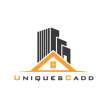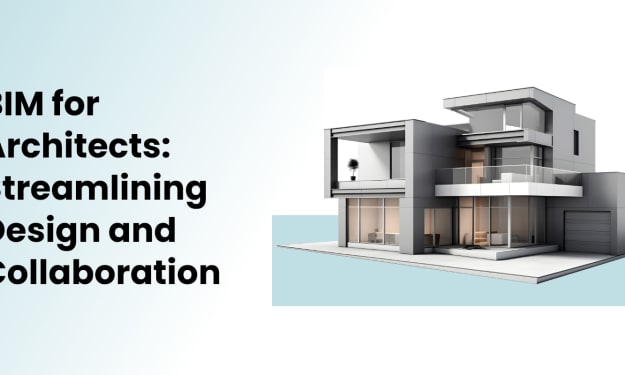Harnessing the Power of Scan to BIM Technology in the AEC Industry
Scan to BIM, popularly as Point Cloud to BIM services, has become an essential tool for AEC professionals to execute the refurbishment projects as it offers to create information rich 3D models.

In the realm of the architecture industry, technology has drastically changed the face of how architects conceptualize, design, and execute the entire project. It's been quite a while since architects have used building information technology. With that keeping in mind, another transformative technology was invented that made the renovation, remodeling & refurbishment projects much more accessible. Scan to BIM technology has become a game changer in the AEC sector and has gained popularity in a short while as it entails a long list of benefits to architects.
Usually, the term is widely known as a point cloud to BIM as it is defined as a data collection technique where infrastructure data is scanned thoroughly, creating single coordinate points X, Y, and Z of objects, space, and surfaces. These points collected come together to form a whole object. The entire process of Scan to BIM services is done via a 3D laser scanner, scanning the space from different perspectives and turning them into inclusive data. The generated data helps architects in the development of buildings.
Harnessing the power of scan to BIM technology altered the renovation and remodeling workflow process. The conversion collected point data of an infrastructure turns into a precise and information-rich 3D model, providing accurate design information and details of missing components. Point cloud modeling offers accurate heritage conservation with the necessary components to alter and deliver accurate visualization, effective project management, precise data, and clash detection. Conversion of 3D laser scan into an intelligent and data-rich 3D model provides AEC professionals and other parties with updated, precise, and actual data of the existing building. Moreover, it is necessary to adopt scanning to BIM services for key reasons. To get a meticulous understanding, let's dive into point cloud to BIM technology briefly.
Brief Understanding of Scan to BIM Technology
As discussed above, scan to BIM, also known as point cloud to BIM, is done via a 3D scanner, scanning the entire space far from human eye reach. The collection of points is a conglomerate that forms an accurate 3D model rich in information, enabling architects and designers to work efficiently on the project without compromising the quality or missing any vital components. Moreover, it has the ability to align the digital model with physical space by delivering exact details and information about the space. In short, penetrating the advanced technology and converting the point cloud data makes the execution of the project easier, more accurate, and more reliable. The entire process of Scan to BIM services involves a specific laser scanning apparatus that captures data points of the space.
The collected data points are called point cloud data, which are further processed to create a detailed 3D model of the infrastructure using specialized software. The created digital model is utilized for various purposes, including designing, modifying renovations, or conducting clash detections in the structure. This enhances the efficiency of the project and allows architects to remodel the existing infrastructure accurately and with precision. Point Cloud to Revit offers numerous other benefits to AEC professionals that directly reflect on the renovation projects, including streamlined collaboration, better facility management, accurate retrofitting and renovations, and enhanced surveying. The most common use of scan-to-BIM modeling is for remodeling or renovation projects, although there are other uses.
Common Uses of Point Cloud to BIM
When remodeling or renovating any existing building, architects require specific details that can help in the renovation of the project. Although using scan to BIM modeling services gathers crucial assets for the project, which can be further utilized for multiple purposes. Moreover, not just renovation but Scan to BIM services are used for various aspects of the AEC industry, which includes
- Renovation and Refurbishment
- Facilities Management
- Historic Preservation
- As-Built Documentation
As a matter of fact, point Cloud to Revit is not just a mere technological advancement in the AEC sector; however, it is a service that brings a revolution in terms of enhancing accuracy, visualizations, sustainability, and much more in cost-effective terms. With wide acceptance, this technology has become a game-changer in the industry. Although to acquire the full benefits of the scan to BIM, architects, and other users must proceed with the workflow to ensure the project's accuracy and efficiency.
Scan to BIM Workflow Step-by-Step
Laser scan to 3D model technology has dramatically reshaped the industry, offering numerous benefits to AEC professionals. Although to harness the power one must efficiently utilize the technology at its full potential. To do that, Scan to BIM modeling services have several steps, which allow collecting point cloud data and converting it into a detailed 3D BIM model. Following are the steps to follow:
Step 1: Scanning- The initial step in the definitive process is to capture 3D laser scans of the infrastructure. With the help of specialized tools, the experts collect point clouds, which are further used to remodel the structure. However, experts do this step and then transfer it to architects who are working on the project.
Step 2: Point Cloud Registration- To proceed further, point cloud data is registered, that involves the alignment of multiple scans of the same space to generate a single point cloud of the entire space.
Step 3: Data Cleansing- This step is one of the crucial steps as it involves the elimination of any noise, inaccuracies or outliers. Moreover, this enables that the data collected is accurate and can be used in creating visual models of the infrastructure.
Step 4: Model Creation- After the data cleansing process, a 3D model is created using the data via advanced software.
Step 5: Model Refinement- Once the model is created, it is refined by adding more details to ensure the level of accuracy. Elements like textures, materials, windows, etc., are added to represent the existing building visually and accurately.
Step 6: Clash Detection- After the refinement of the 3D model, the model is thoroughly checked to ensure no clashes or interferences have occurred with other building systems, such as mechanical, electrical, or plumbing systems. Moreover, clash detection also helps visually identify the potential conflict, which can save costly rework and overtime runs.
Step 7: BIM Deliverables- After the final 3D model is created, it is further utilized to develop various BIM deliverables, including 3D visualizations, construction documentation, and much more.
Wrapping Up
Scan to BIM technology has become an essential technology for AEC industry professionals. It offers various benefits to projects and has helped the industry transform into a more efficient and accurate sector. With wide acceptance, scan-to-BIM services have undoubtedly become a crucial tool for renovation projects, ensuring efficiency, cost, timeframe, and accuracy. 3D BIM services enable AEC professionals to execute the project with precision within the timeframe and budget of the project.
About the Creator
Hannah jenson
UniquesCadd is an architectural & engineering company providing exceptional building design solutions, namely BIM services, architectural services, structural services, scan to bim, 3D rendering, CAD drafting & MEPF solutions






Comments
There are no comments for this story
Be the first to respond and start the conversation.